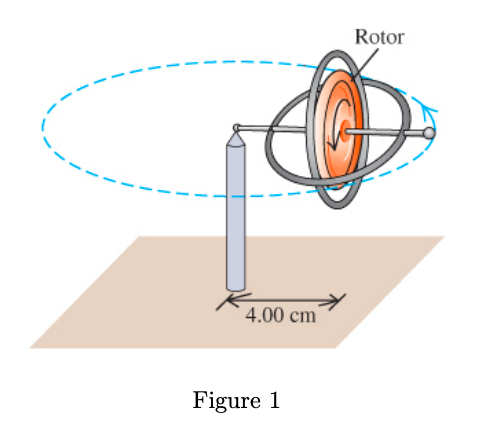I have a homework question about gyroscope rotation, but I will describe my confusion more specifically as follows:
Below is the setup of the problem. I understand the concept that if the rotor is made to spin, then there is an angular momentum generated in the direction given by right-hand rule, in this case to the right of the page. This, combined with the torque into the page given by the object's weight, will result in the gyroscope to start rotating in a circle.
However, what confuses me is that if I am given the period of gyroscope rotation $T$ and the mass and moment of inertia of rotor, how can I then calculate the rate at which the rotor is spinning at? What kind of equation can allow me to equate these two concepts and solve for the rotor spinning speed?


